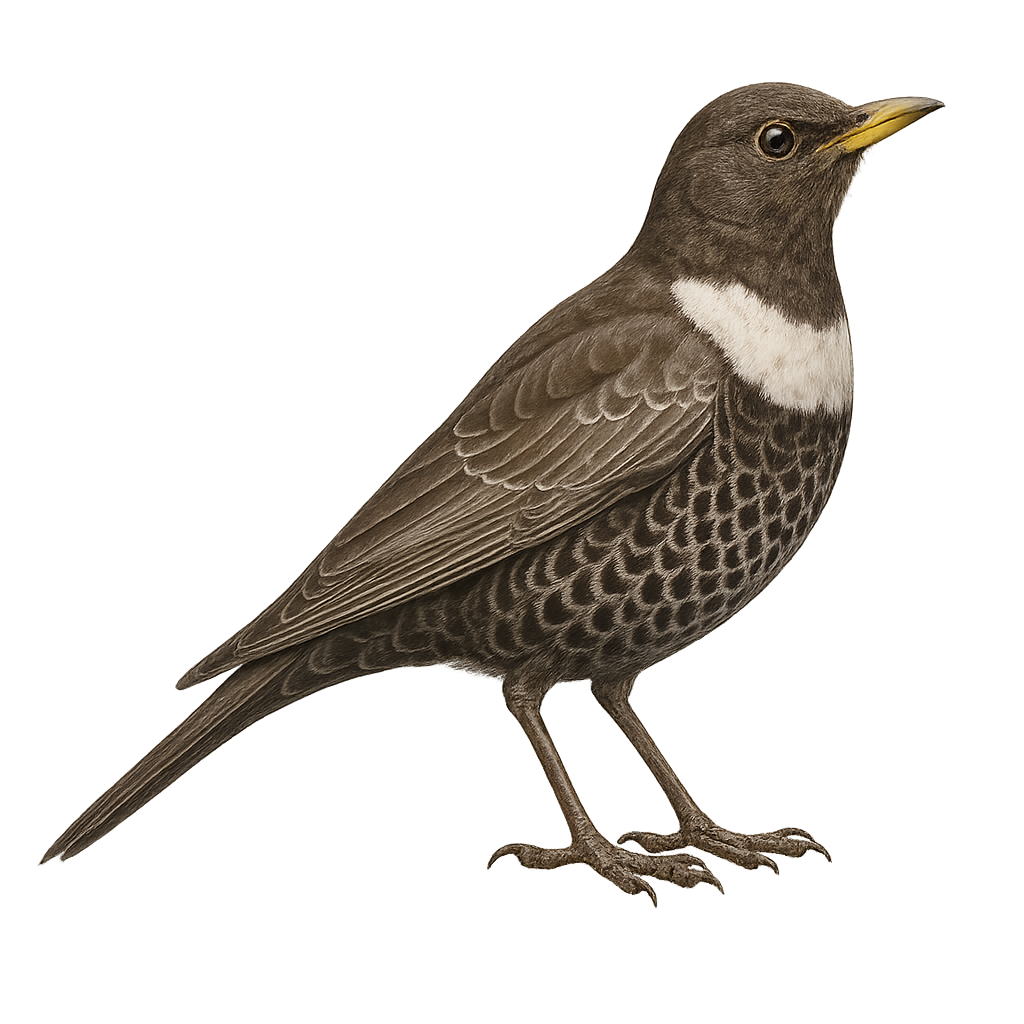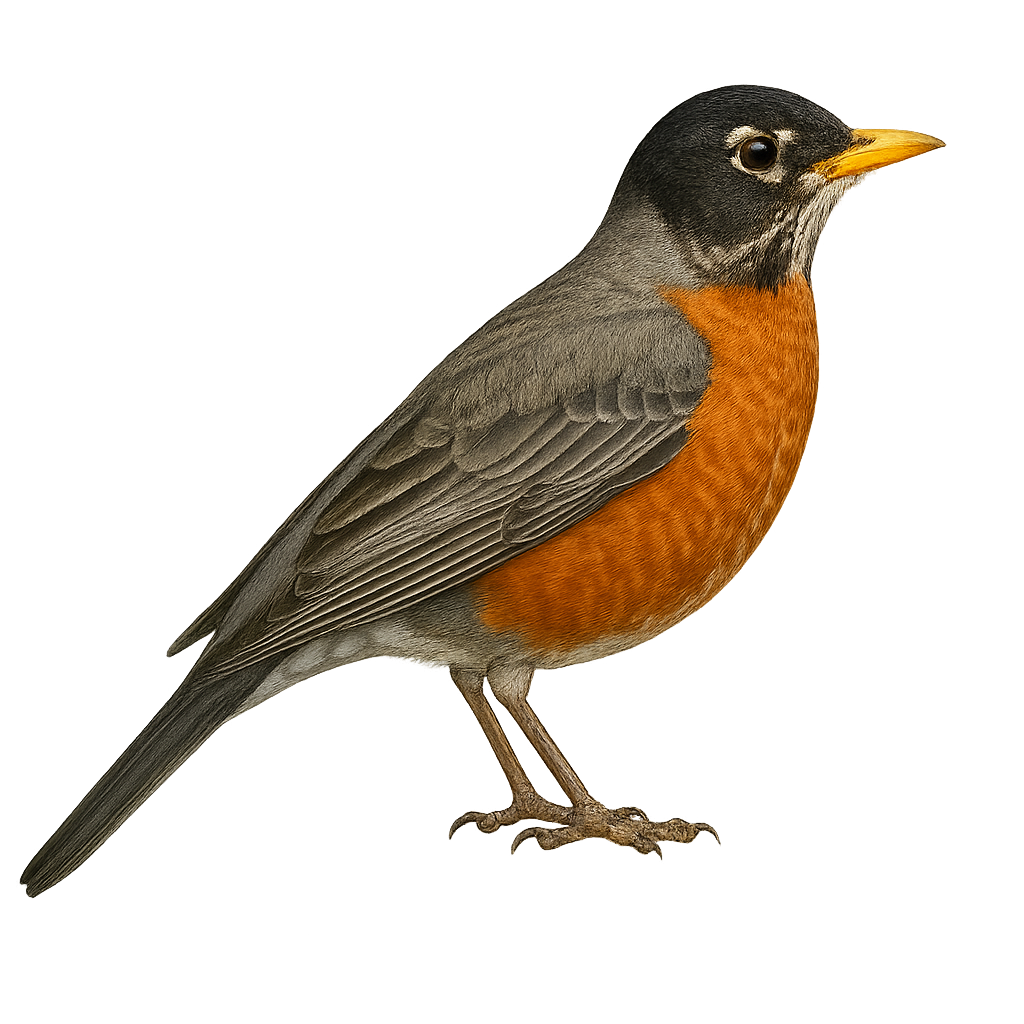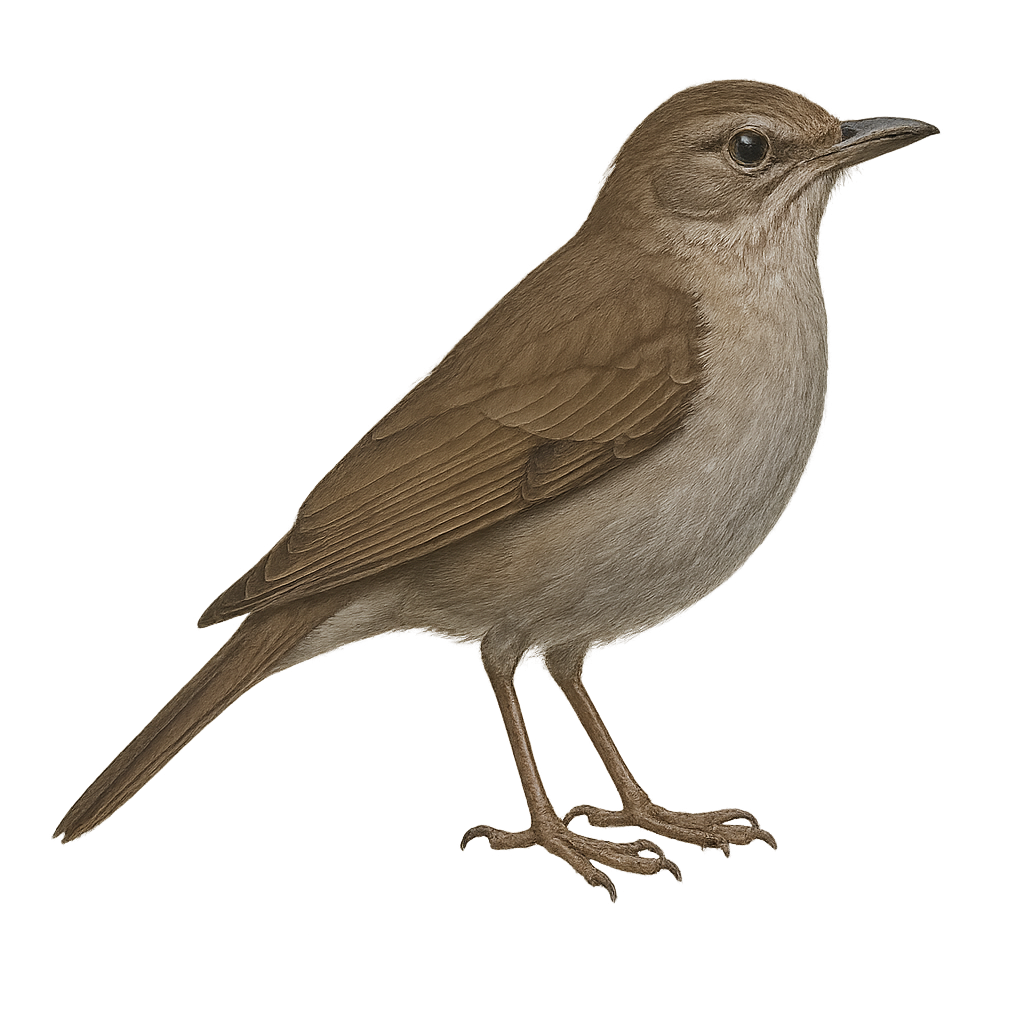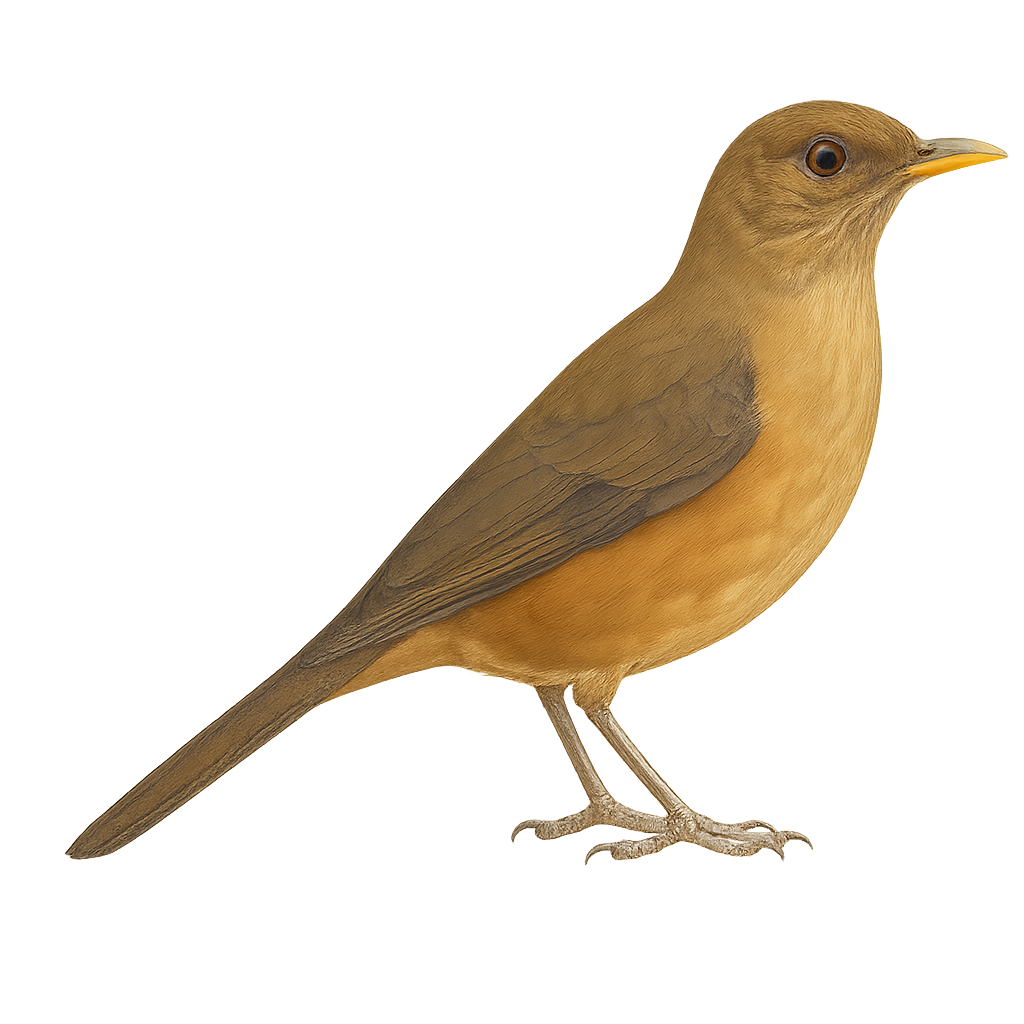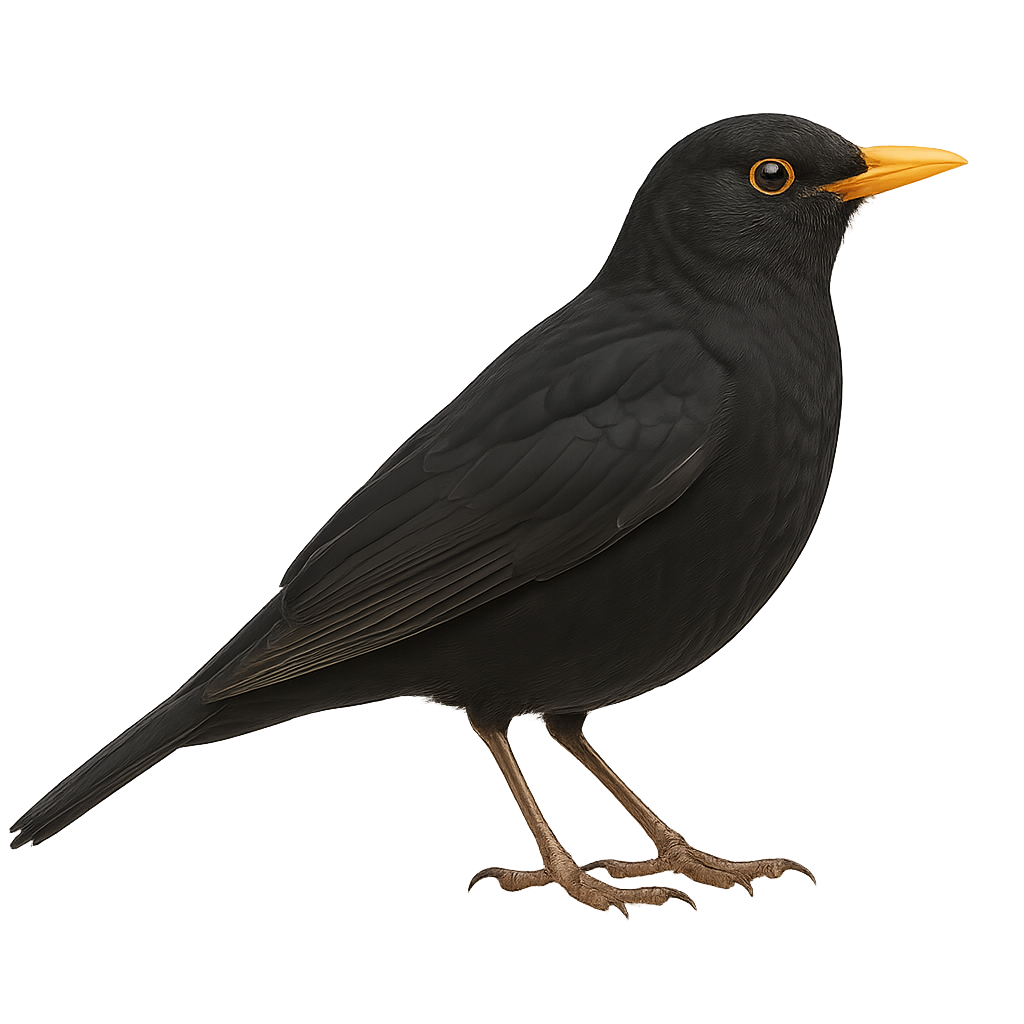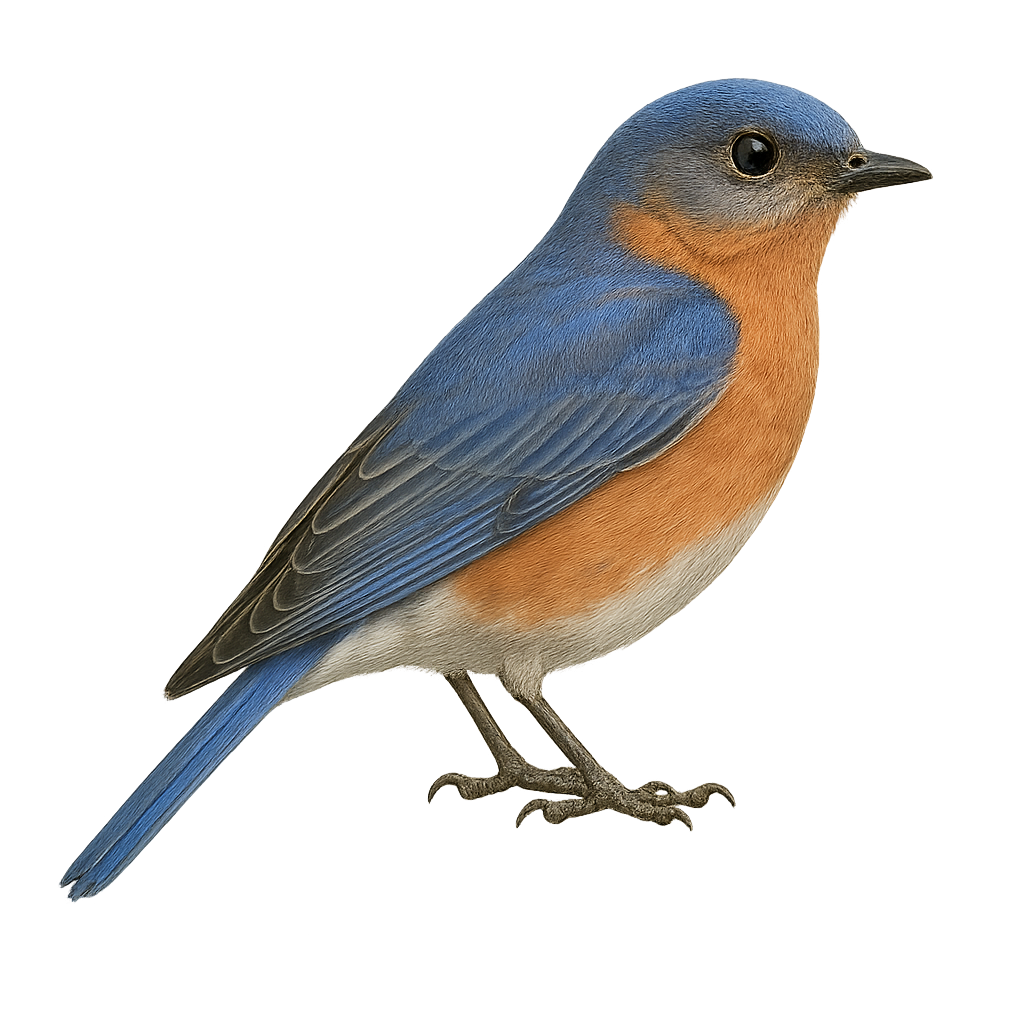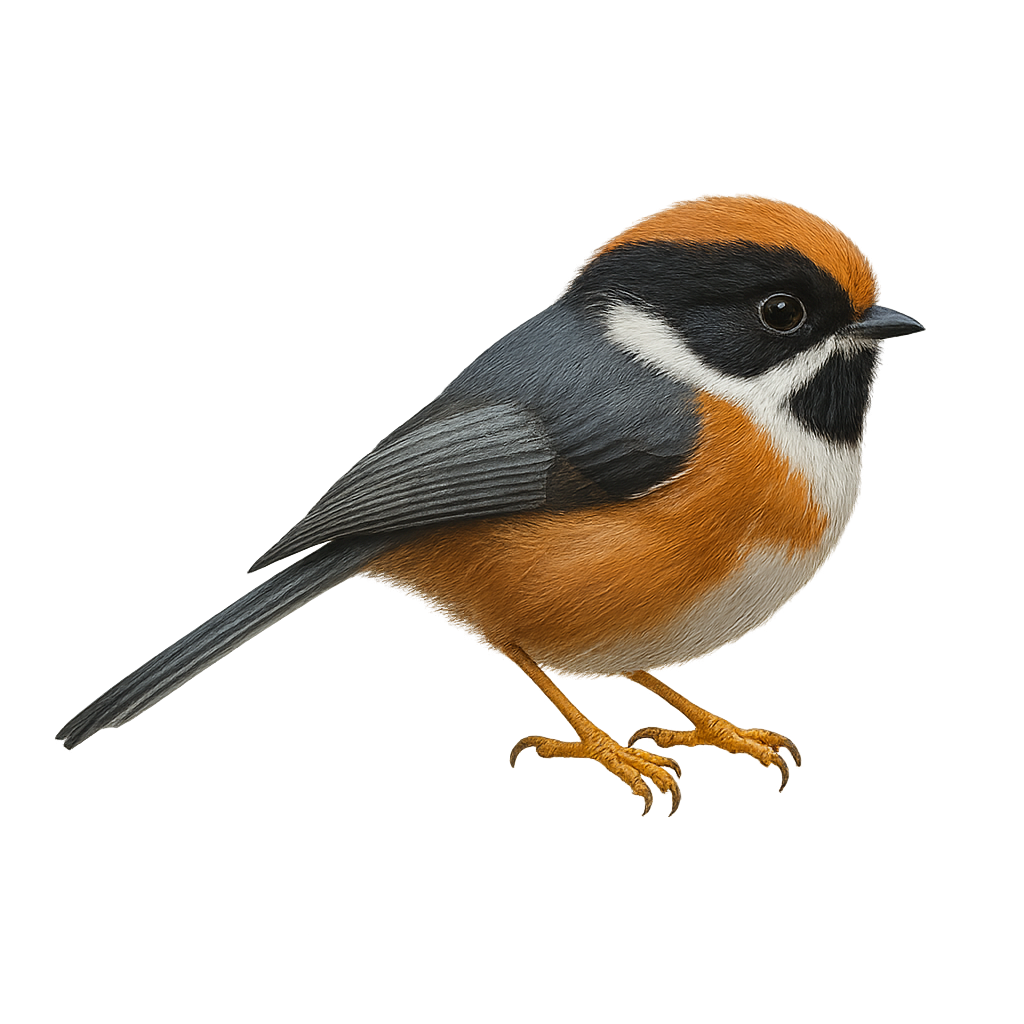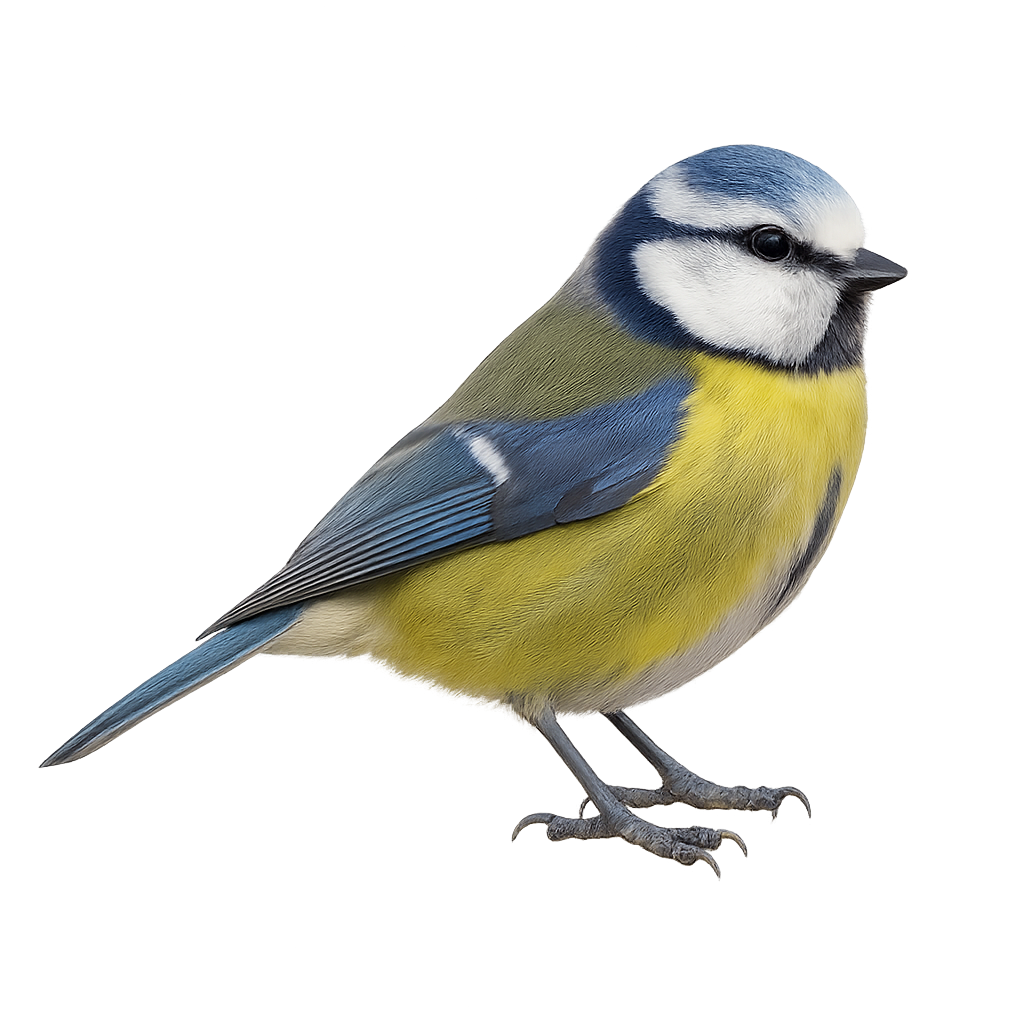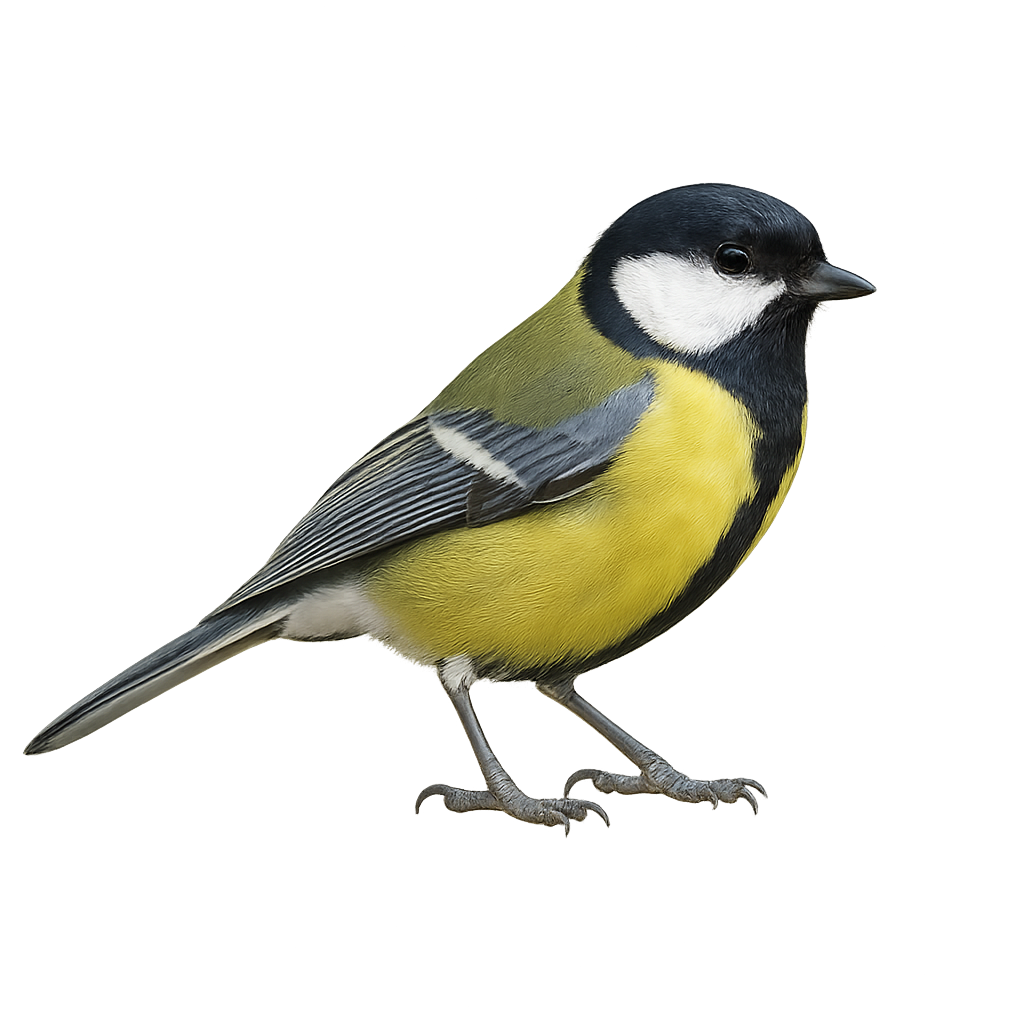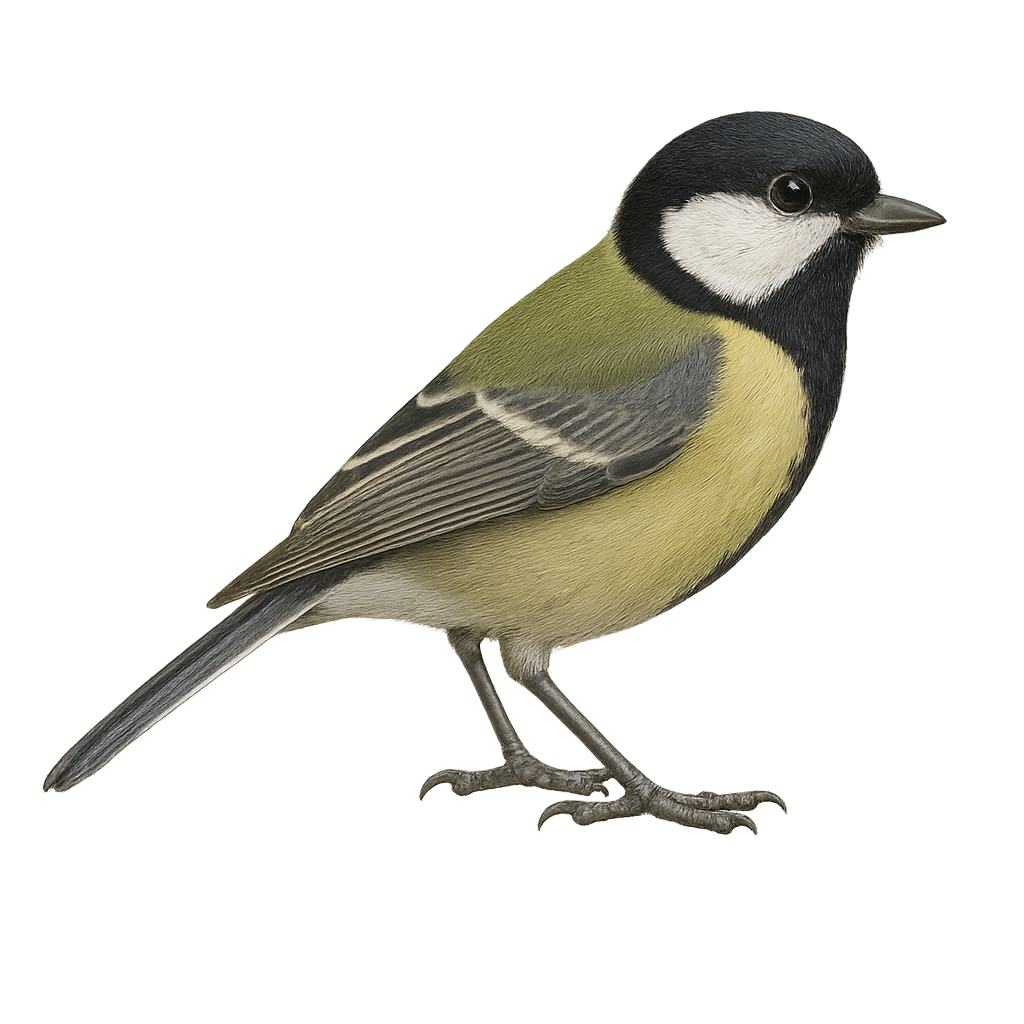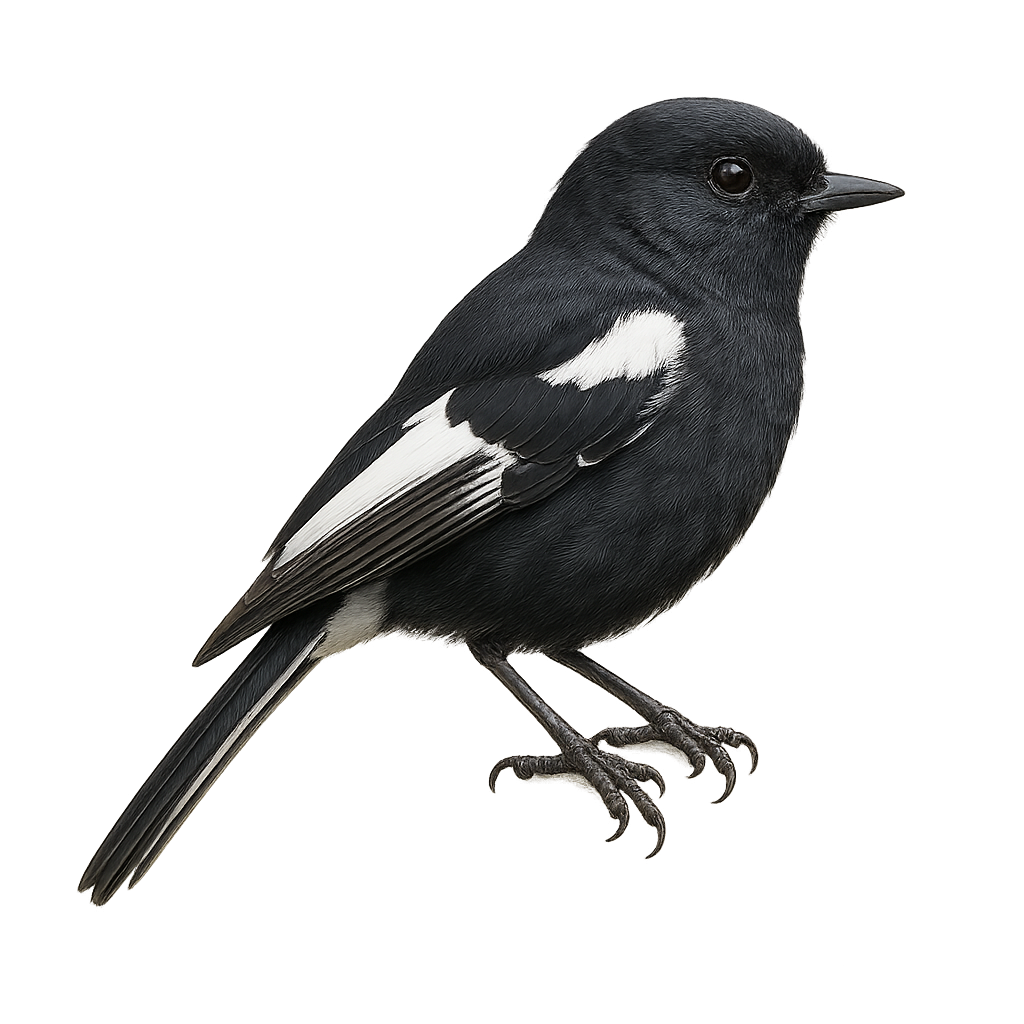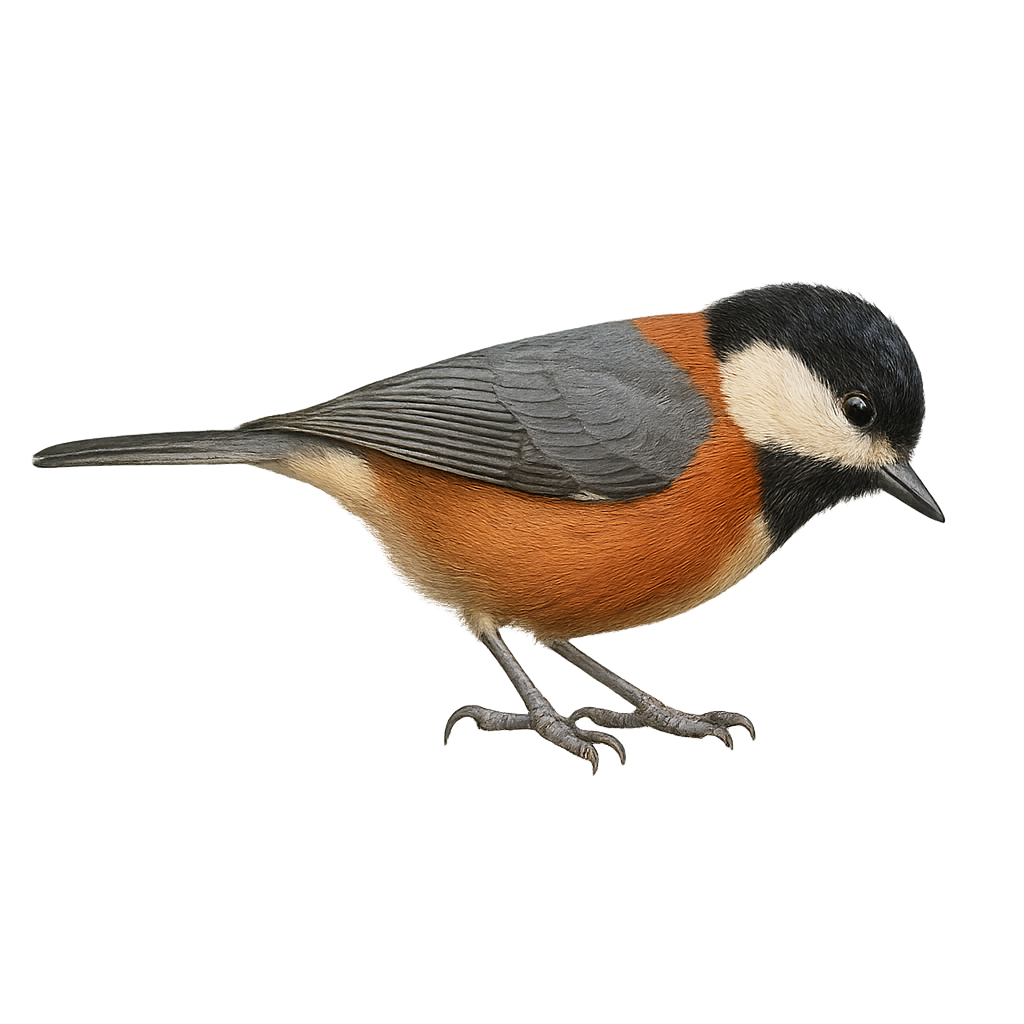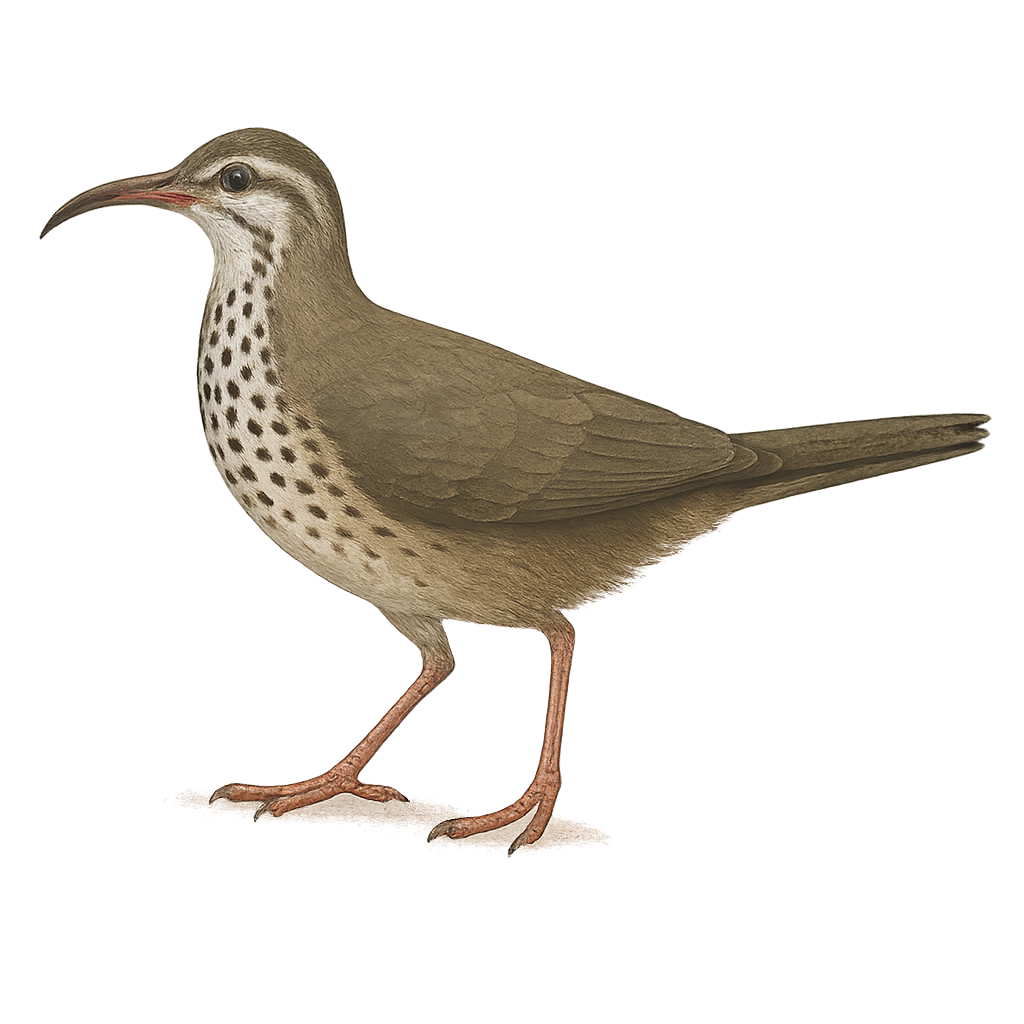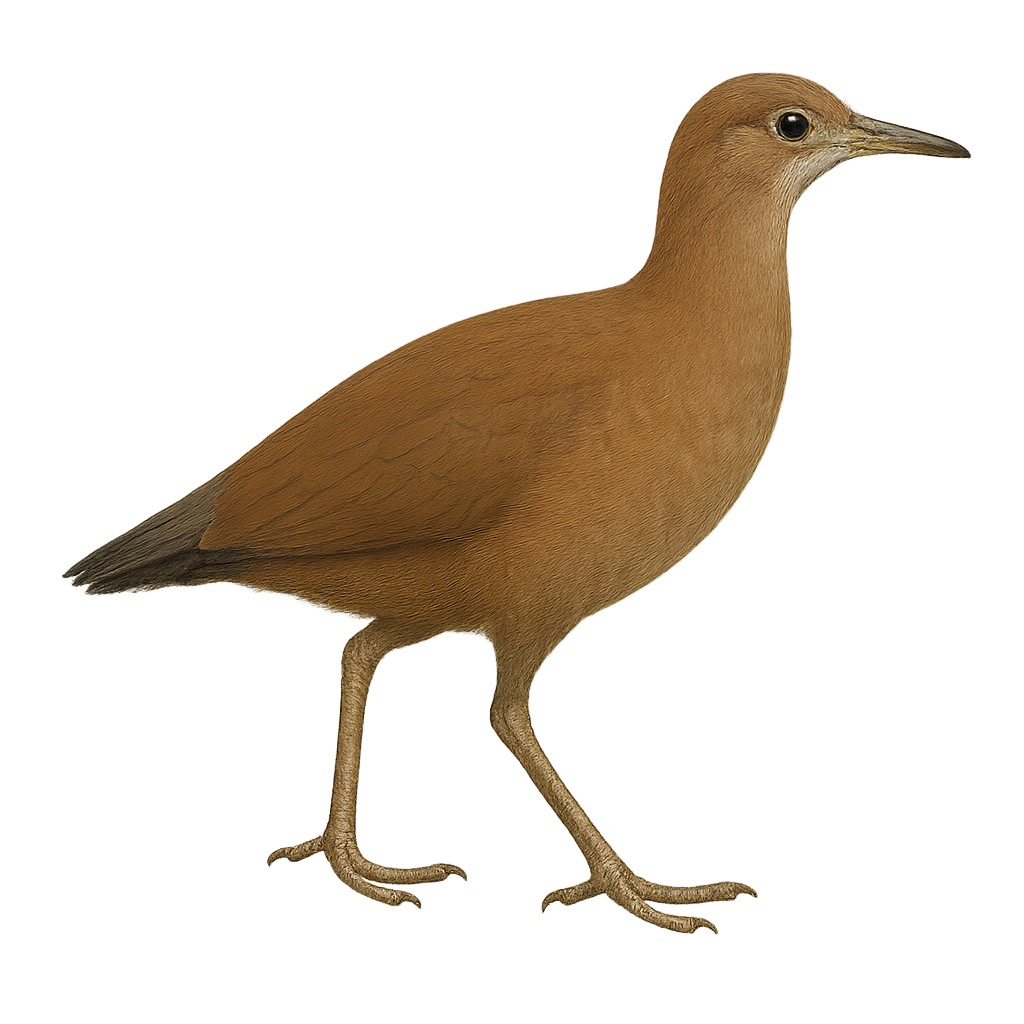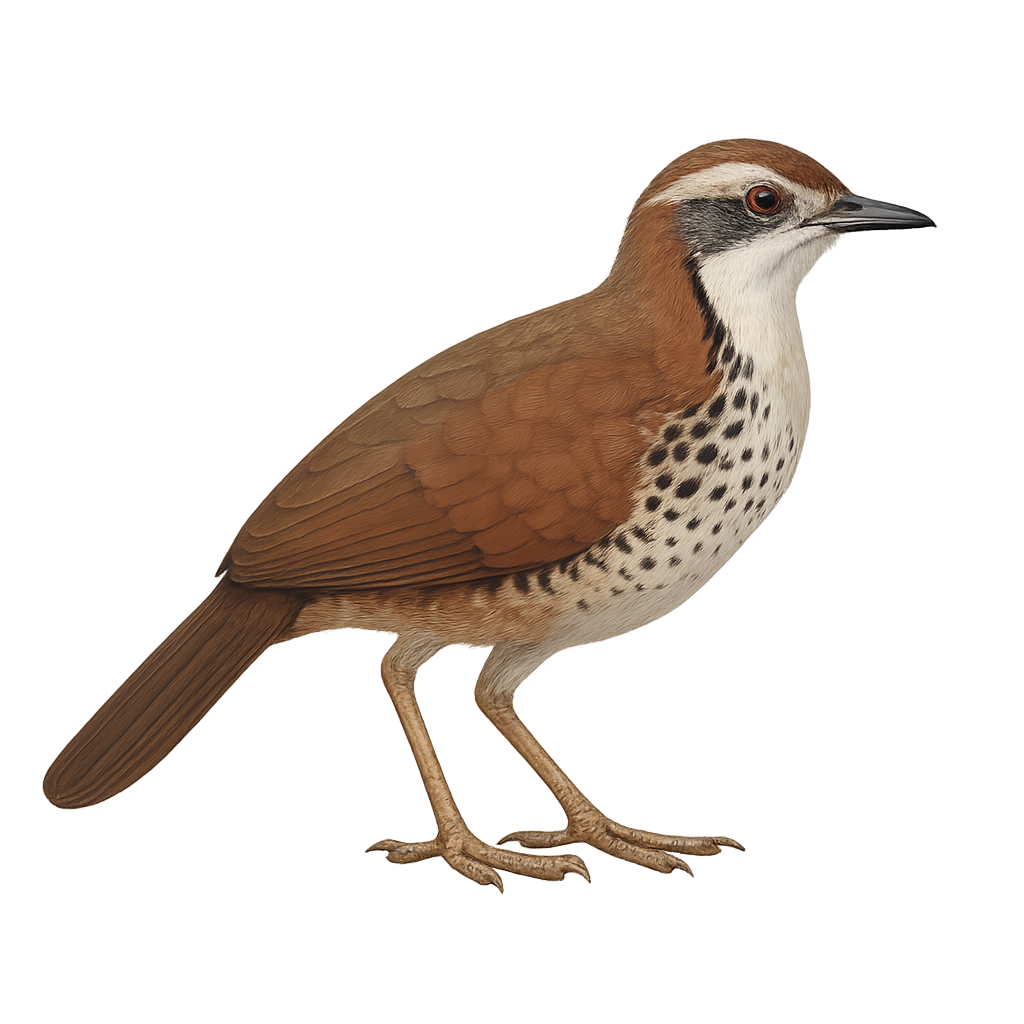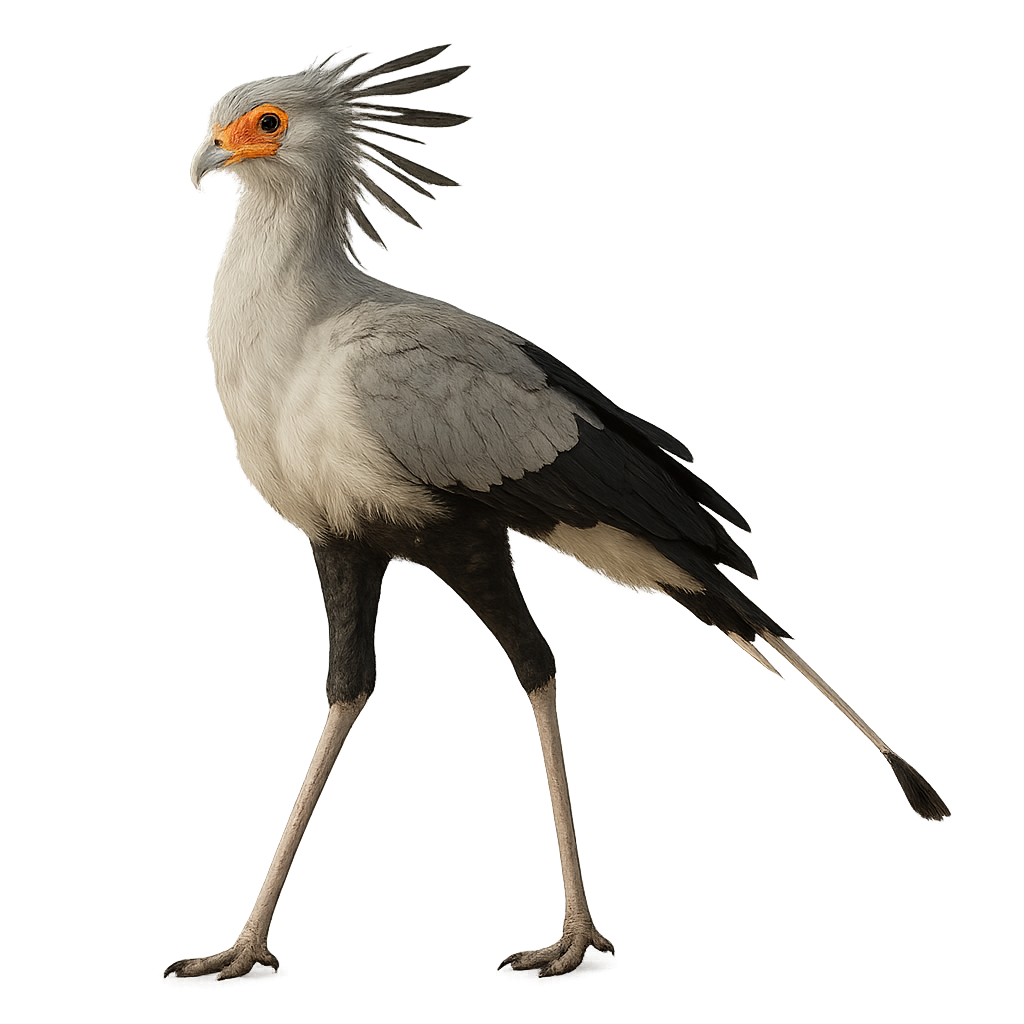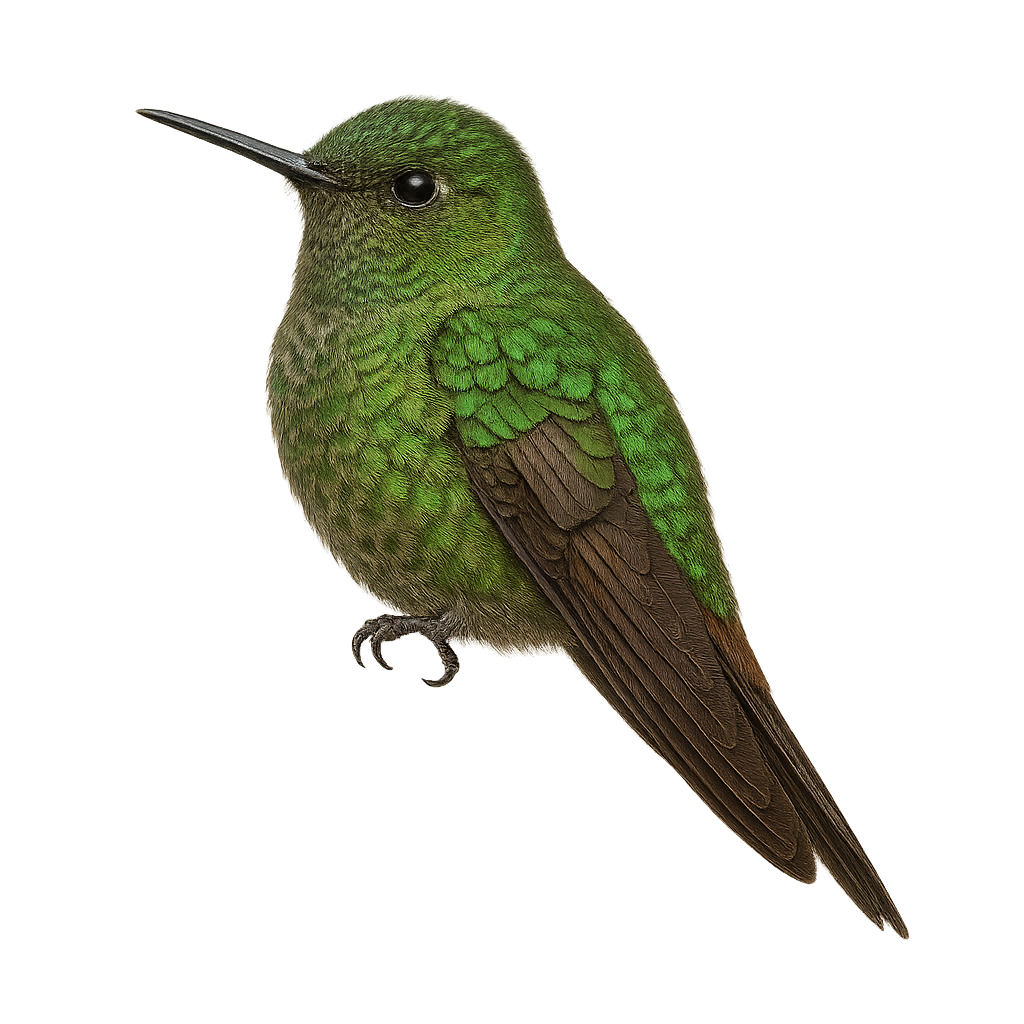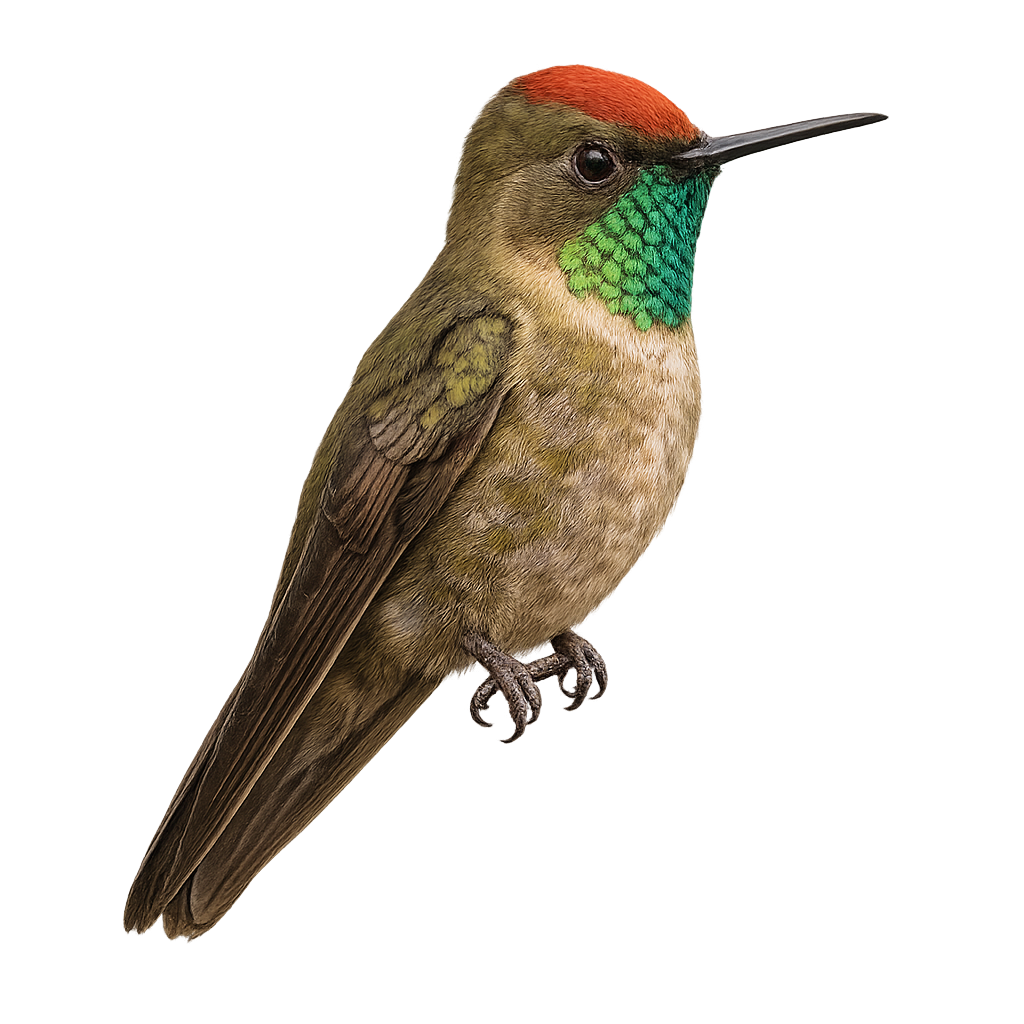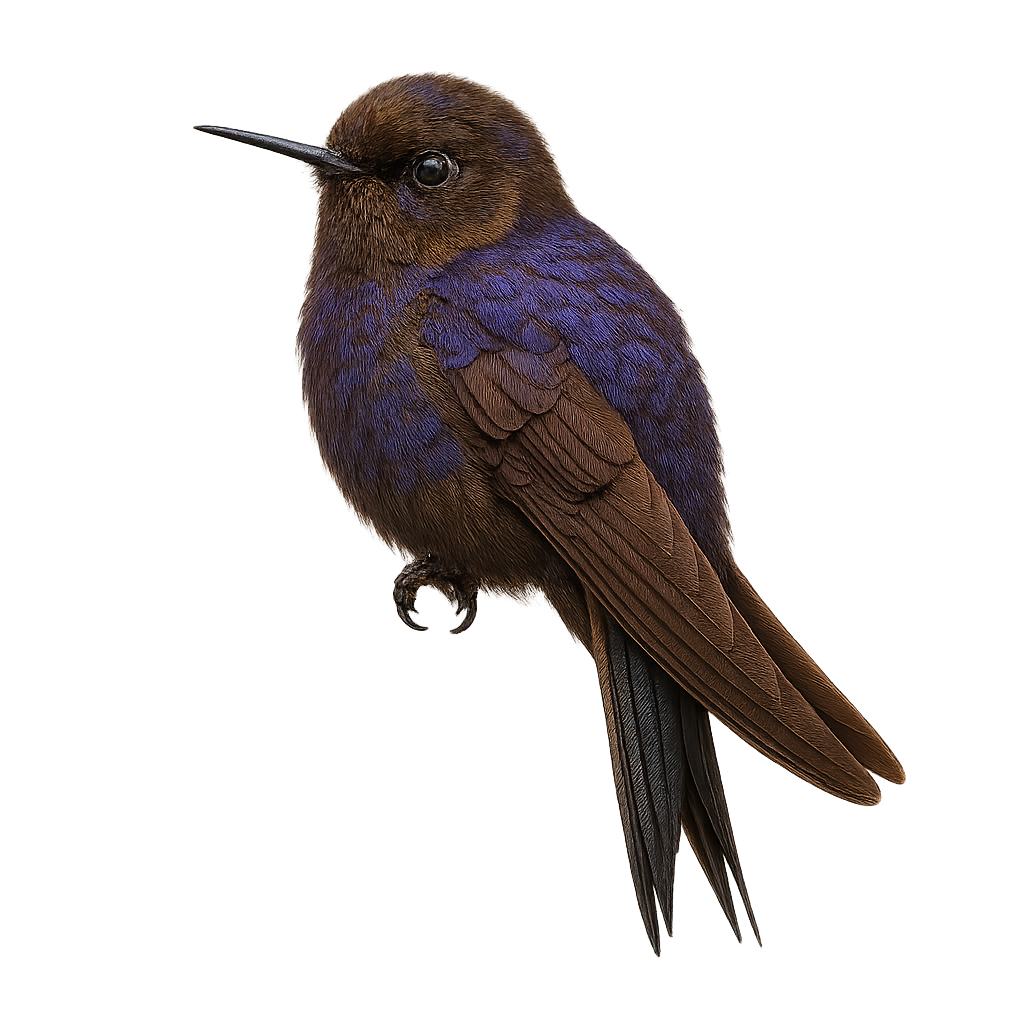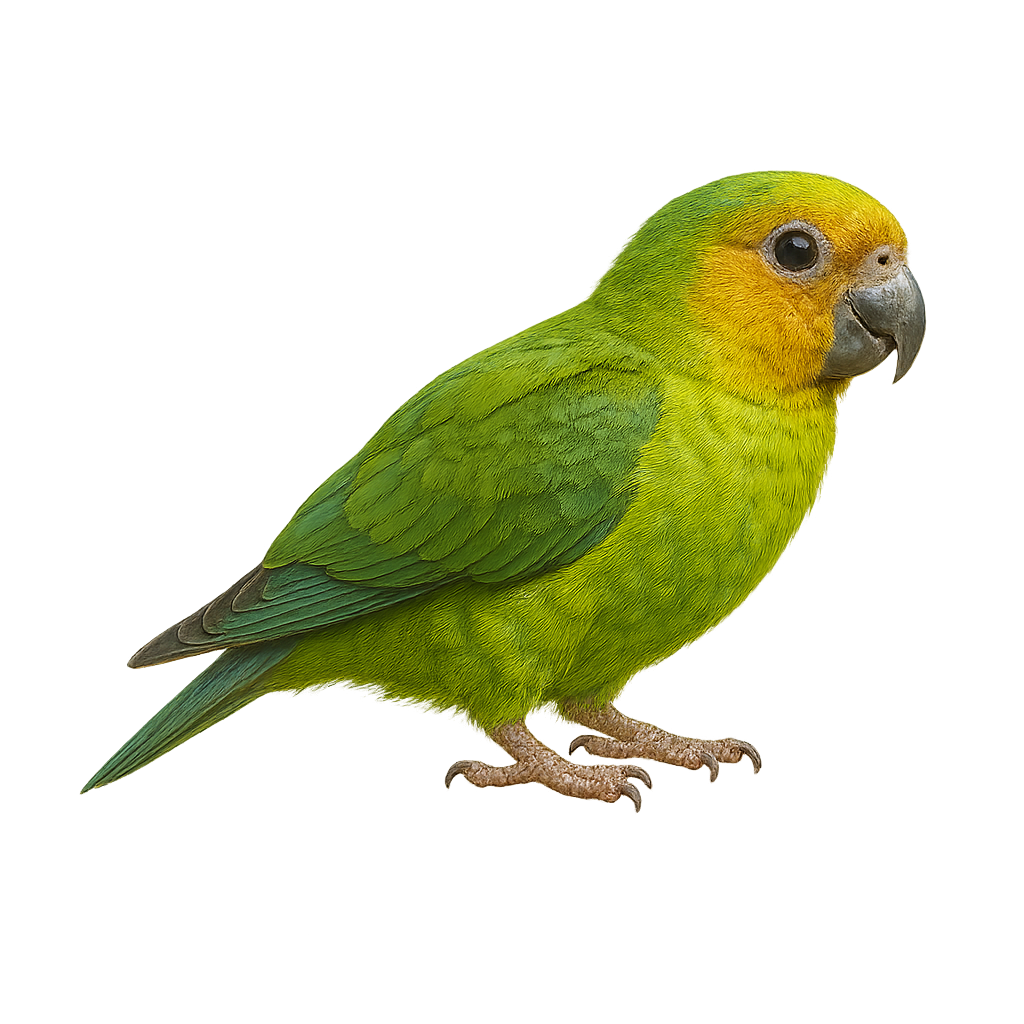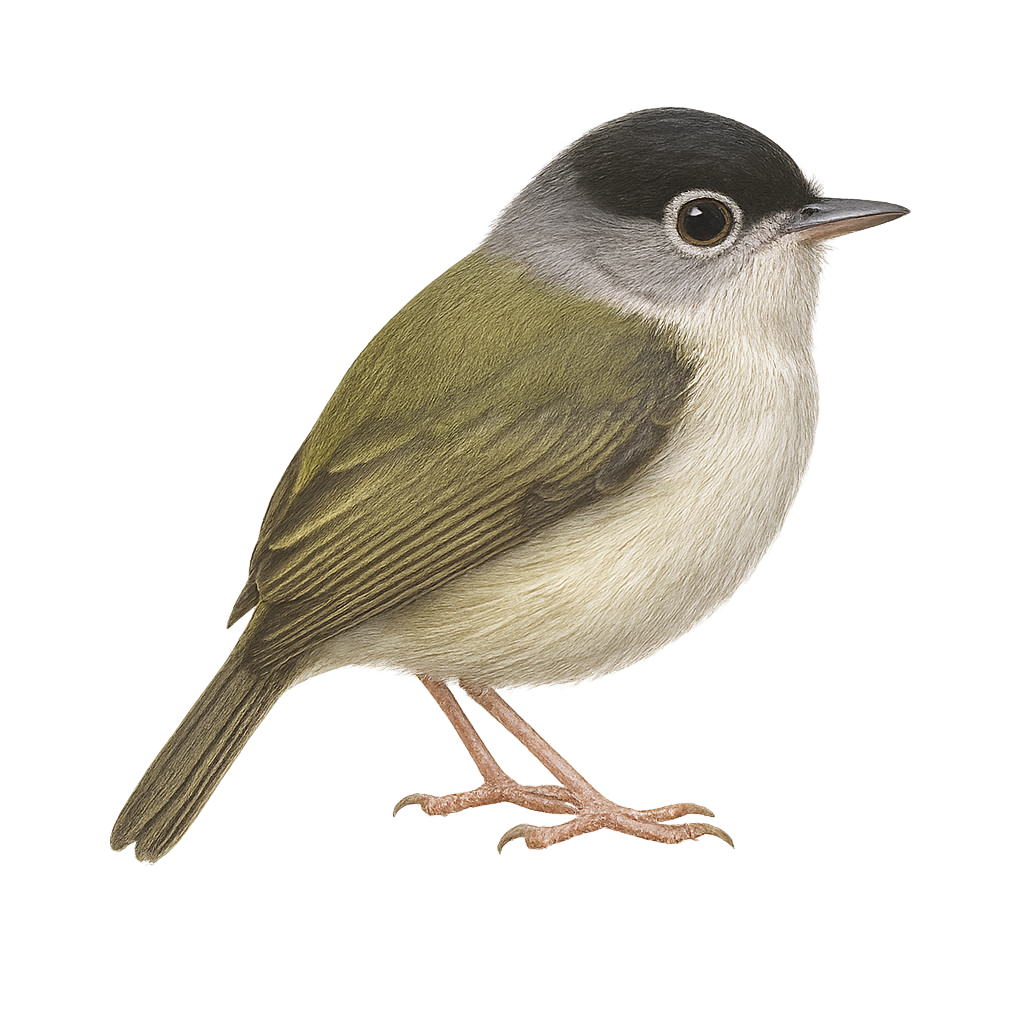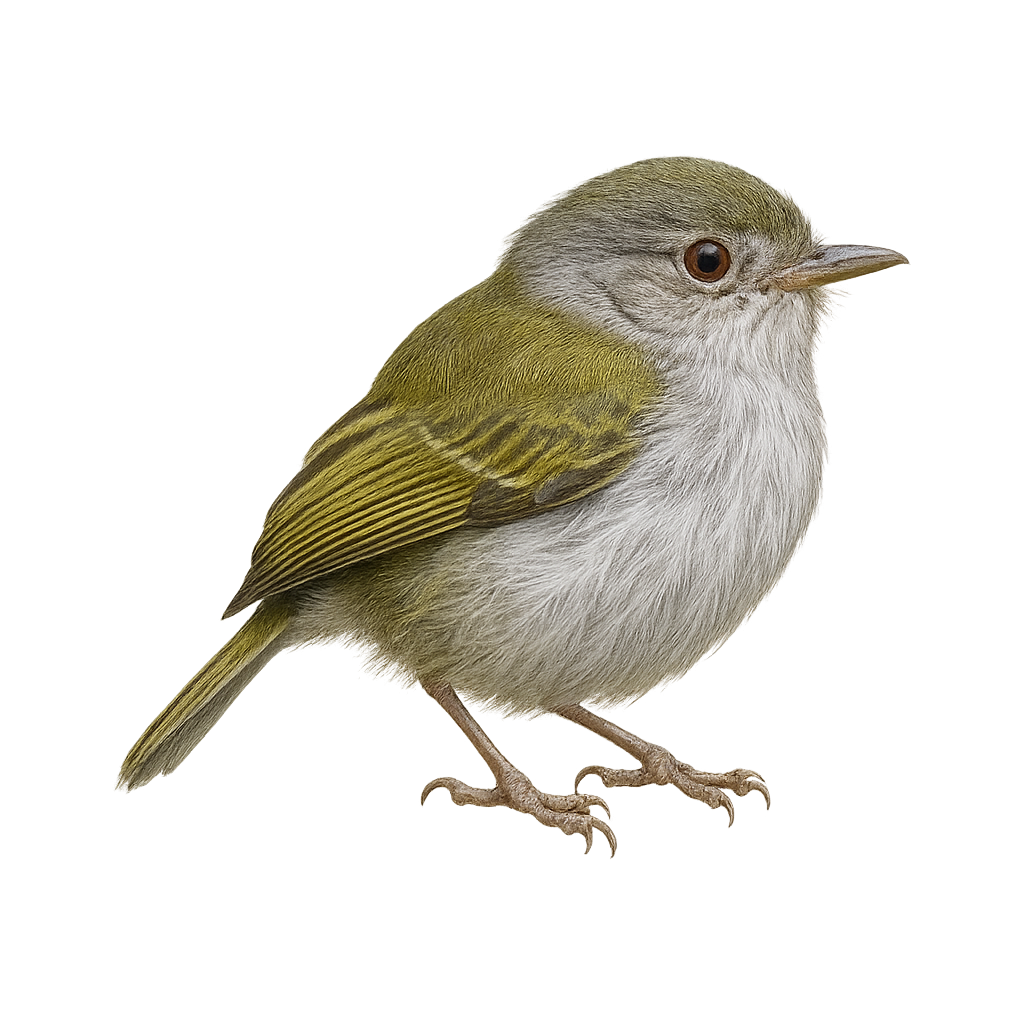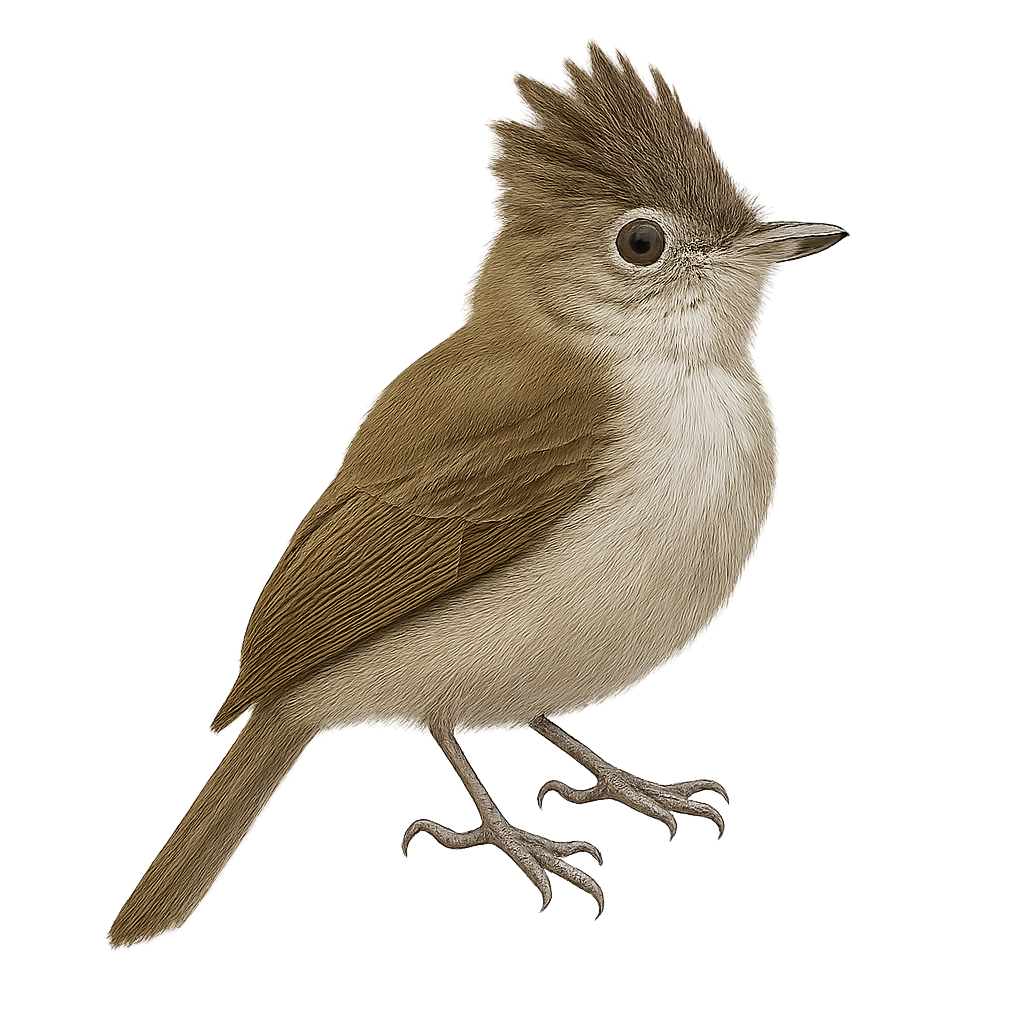The ring ouzel is a passerine bird found primarily in the mountains and coniferous forests of Europe, Asia, and the Middle East. It is easily recognized by its dark plumage, white chest that contrasts with its black belly, and the white ring around its neck. This small bird primarily feeds on berries, insects, and small fruits, which it finds mainly in bushes and forest floors.
The American Robin, or Turdus migratorius, is a well-known bird in North America, easily identified by its bright orange-red belly and dark gray back. Measuring about 25 cm in length, it is often seen in gardens, parks, and forests. This bird is famous for its melodious song, especially noticeable in spring. The American Robin is a partial migrant, moving south in winter. It primarily feeds on earthworms, insects, and fruits. Its adaptability to various habitats and its not very shy behavior make it a favorite among birdwatchers.
The Fea's Thrush, or Turdus feae, is a rare and elusive bird primarily found in the humid forests and wooded areas of São Tomé Island. This medium-sized bird features an olive-brown plumage with lighter shades on its belly. Its melodious and varied song is often heard at dawn and dusk. Although its habitat is limited, it plays a crucial role in the local ecosystem by aiding in seed dispersal. The Fea's Thrush is a vulnerable species due to deforestation and habitat loss. Its conservation is vital to maintaining the ecological balance of its insular environment.
The Clay-colored Thrush, or Turdus grayi, is a medium-sized bird, measuring about 23 to 27 cm in length. Its plumage is primarily light brown, allowing it to blend into its natural surroundings. Known for its melodious song, it is often heard at dawn and dusk. This bird is widely distributed in Central America, from southern Mexico to northern Colombia. It prefers open habitats such as gardens, parks, and secondary forests. The Clay-colored Thrush is an omnivorous bird, feeding on fruits, insects, and small invertebrates. It is often seen foraging on the ground in search of food.
The European blackbird is a very common passerine bird found throughout Europe, Asia Minor, and North Africa. It is easily recognized by its glossy black plumage and bright yellow beak. This passerine primarily feeds on earthworms, insects, and fruit. Although it is often seen in gardens and urban parks, it remains a relatively discreet bird. It is also highly regarded for its melodious song, especially in spring.
The Eastern Bluebird, or Sialia sialis, is a small songbird belonging to the Turdidae family. It is easily recognizable by its bright blue plumage on the back and wings, contrasting with a reddish-orange chest and white belly. Males display more vibrant colors than females, who have duller plumage. This bird primarily feeds on insects but also consumes berries, especially in winter. It inhabits open fields, orchards, and sparse woodlands. The Eastern Bluebird is known for its melodious song and its ability to adapt to artificial nest boxes, which has helped stabilize its populations after a decline due to habitat loss and competition with introduced species.
The long-tailed tit is a small passerine bird distinguished by its very long tail, nearly as long as its body. It is primarily found in mixed forests, hedgerows, and wooded parks across Europe and Asia. This small bird is often seen in groups, moving quickly from tree to tree in search of insects and spiders, which it catches with agility. Its tail helps it maintain perfect balance when perched and allows it to navigate through branches to forage.
The Black-capped Chickadee is a small bird with distinctive plumage, featuring a black cap, white cheeks, and a grayish body. It is widely distributed across North America, inhabiting forests, parks, and gardens. Known for its curiosity and friendly behavior towards humans, this bird primarily feeds on insects, seeds, and berries, often observed storing food for winter. The Black-capped Chickadee is also famous for its characteristic "chick-a-dee-dee-dee" call. It symbolizes resilience, capable of surviving harsh winter conditions due to its fast metabolism and ability to enter torpor to conserve energy.
The Black-throated Bushtit, or Aegithalos concinnus, is a small bird with distinctive plumage, characterized by a black and white head, brown back, and long tail. It measures about 10 to 11 cm in length and weighs between 6 and 10 grams. It is primarily found in Asia, especially in deciduous forests and wooded areas. Known for its sociability, it tends to move in family groups. Its diet mainly consists of insects and small invertebrates, but it also consumes seeds and berries. The Black-throated Bushtit is an active and agile bird, often seen flitting between branches in search of food.
The blue tit is a small, colorful bird easily recognizable by its blue head, olive back, and bright yellow breast. It is found primarily in forests, gardens, and parks across Europe and Asia. The blue tit is a curious and active bird, often seen foraging for seeds, berries, and insects. It is also capable of using ingenious techniques to access food, making it a fascinating subject for photographers.
The boreal chickadee is a small passerine, 11–13 cm long, with olive-gray and brown plumage, featuring a dark brown cap, black bib, and white cheeks. It inhabits coniferous and mixed forests across the northern hemisphere, feeding on insects, seeds, and berries gleaned while clinging to branches. During the breeding season, pairs excavate or occupy tree cavities to nest, and the male feeds the female at the nest.
The great tit is a small, very common tit found across Europe and Western Asia. It is easily recognizable by its bright yellow plumage, black head, and white cheeks. This passerine bird is commonly seen in gardens, parks, and forests, where it feeds primarily on insects, seeds, and berries. The great tit is known for its curious nature and its ability to adapt to different habitats. It is also an excellent climber, often seen foraging in trees and shrubs.
The Japanese Tit, or Parus cinereus, is a small songbird belonging to the Paridae family. It is primarily found in East Asia, notably in Japan, Korea, and parts of China. This bird is recognizable by its distinctive black and white plumage, with a black cap, white cheeks, and a grayish belly. The Japanese Tit is a sociable and active bird, often seen in small groups. It feeds mainly on insects, seeds, and fruits. It is known for its ability to adapt to various habitats, including forests, urban parks, and gardens.
The White-shouldered Black Tit, or Melaniparus guineensis, is a small passerine bird belonging to the Paridae family. It is primarily recognized for its distinctive black and white plumage, with a black head and a white patch on the shoulder, from which it derives its common English name. It mainly inhabits the savannas and open forests of West Africa, where it feeds on insects and seeds. This bird is often observed in small groups, displaying social and curious behavior. Although its habitat is relatively stable, it is sometimes threatened by deforestation and the loss of its natural habitat. The White-shouldered Black Tit is a diurnal bird, active mainly during the day, and is known for its melodious and varied songs.
The coal tit is a small passerine, 10–12 cm long, with slate-grey plumage, a black cap, white bib, and subtly streaked flanks. It frequents coniferous and mixed woodlands across Europe, often at edges or low in the canopy, where it forages on branches and trunks for insects and spiders. Solitary or in small family groups, it may join communal roosts in winter. During the breeding season, pairs defend their nest site together, placing the nest in a tree cavity or an old tit nest.
The marsh tit is a small passerine bird found primarily in broadleaf forests, thickets, and wetland areas across Europe and Asia. It is easily recognized by its light brown plumage, black crown, and white belly. This small bird primarily feeds on insects, seeds, and berries, which it finds in the foliage and underbrush. The marsh tit is also known for its curious behavior and soft song.
The Varied Tit, Sittiparus varius, is a small, colorful bird native to East Asia, particularly Japan, Korea, and parts of China. It is distinguished by its vibrant plumage, which combines shades of black, white, rufous, and gray. This passerine measures about 12 to 14 cm in length and weighs between 16 and 18 grams. The Varied Tit is known for its sociability and curiosity, often seen in small groups in deciduous and mixed forests. It primarily feeds on insects, seeds, and fruits. Its melodious and varied song is a delight to birdwatchers. Although relatively common in its range, it is sensitive to environmental changes.
The Bensch's Monias, or Monias benschi, is a rare and intriguing bird endemic to Madagascar. It features a dull brown plumage that allows it to blend seamlessly into its natural habitat of dry forests and scrublands. This ground-dwelling bird is known for its elusive behavior and ability to move swiftly on the ground. It primarily feeds on insects and small invertebrates by foraging on the forest floor. The Bensch's Monias is monogamous, forming stable pairs. Its population is declining due to deforestation and habitat degradation, making it a vulnerable species in need of increased conservation efforts.
The Brown Mesite is an endemic bird of Madagascar, belonging to the Mesitornithidae family. This small terrestrial bird is recognizable by its uniform brown plumage, which allows it to blend into its natural habitat. It measures about 30 cm in length and has strong legs adapted for walking. The Brown Mesite is primarily insectivorous, feeding on insects and small invertebrates found by foraging on the forest floor. It is often seen in small family groups. This bird is threatened by deforestation and habitat fragmentation, leading to a decline in its population. It is currently classified as vulnerable by the IUCN.
The White-breasted Mesite, or Mesitornis variegatus, is an endemic bird of Madagascar, belonging to the Mesitornithidae family. It is characterized by its brown plumage speckled with white on the chest, providing excellent camouflage in its natural habitat. This terrestrial bird prefers dry forests and dense undergrowth, where it primarily feeds on insects and small invertebrates. Although capable of flight, it spends most of its time on the ground, moving nimbly through the vegetation. The White-breasted Mesite is a monogamous species, forming stable pairs. Its population is declining due to deforestation and hunting, classifying it as vulnerable by the IUCN.
The Sagittarius Hornbill, or Tockus alboterminatus, is a medium-sized bird primarily found in the savannas and open forests of Central and East Africa, notably in Kenya, Tanzania, and Uganda. It measures about 45 to 50 cm in length and weighs between 100 and 150 g. This bird is distinguished by its predominantly light gray and white plumage, with touches of black on the wings and tail, as well as a long, curved beak, characteristic of hornbills and messengers. Its name "sagittarius" comes from its beak, which resembles an arrow. The Sagittarius Hornbill primarily feeds on fruits, seeds, small insects, and small vertebrates. It is also known for its social behaviors and can be observed in small groups or pairs, and while less noisy than other hornbills, it emits distinct communication calls. The species is not currently endangered but may be affected by deforestation and loss of its natural habitat.
The Bronzy Inca, or Metallura aeneocauda, is a small hummingbird native to the Andes. It is distinguished by its iridescent plumage, featuring shades of green and bronze, and its distinctive long tail. This hummingbird primarily inhabits humid montane forests and shrublands at high altitudes. It feeds mainly on nectar, which it gathers by flying from flower to flower, but it also consumes small insects to supplement its diet. Its rapid and agile flight allows it to navigate easily through its rugged habitat. Although generally solitary, it can be seen in small groups during the abundant flowering of certain plants.
The Chalcostigma ruficeps, or Rufous-capped Thornbill, is a captivating small bird belonging to the Trochilidae family. This hummingbird is notable for its distinctive rufous head, contrasting with its metallic green body. It primarily inhabits cloud forests and shrublands of the Andes, at altitudes between 2500 and 4000 meters. Its modest size, about 10 cm, and light weight, around 5 grams, allow it to maneuver skillfully among the flowers it feeds on. Its thin, slightly curved bill is perfectly adapted to extract nectar from tubular flowers. In addition to its nectarivorous diet, it also consumes small insects to meet its protein needs.
The Chalcostigma herrani, or Bronze-tailed Thornbill, is a fascinating small hummingbird endemic to the Andes. It is distinguished by its iridescent plumage, with a bronze-colored tail that gives it a particular shine. This hummingbird measures about 10 cm in length and weighs between 4 and 5 grams. Its thin, slightly curved beak is perfectly adapted to collecting nectar, its main food source. It frequents high-altitude areas, often above 2500 meters, where it feeds on Andean flowers. Although not very shy, it remains vigilant against predators. Its ability to hover and make rapid movements makes it a captivating sight for nature observers.
The Chalcostigma stanleyi, or Stanley's Thornbill, is a small, captivating bird belonging to the Trochilidae family. This hummingbird is distinguished by its iridescent plumage with metallic hues, often dominated by shades of green and blue. It primarily inhabits the mountainous regions of the Andes, frequenting humid forests and shrublands. Its thin, slightly curved beak is perfectly adapted for feeding on flower nectar, although it also consumes small insects to supplement its diet. The Stanley's Thornbill is a solitary bird, known for its speed and agility in flight. Its breeding period is influenced by local climatic conditions, making its observation particularly interesting for ornithologists.
The Buff-faced Pygmy Parrot, or Micropsitta pusio, is the smallest parrot in the world, measuring about 8 to 9 cm in length. It is primarily green with a distinctive yellow face and blue markings on the wings. This parrot inhabits the tropical rainforests of New Guinea and surrounding islands. It feeds mainly on lichens, mosses, and fungi found on tree trunks. Its behavior is discreet, making it difficult to observe in its natural habitat. It lives in small groups and uses tree cavities for nesting. Its small size and green plumage provide excellent camouflage in the dense canopy.
The Black-capped Pygmy-Tyrant, Myiornis atricapillus, is a tiny bird from the Tyrannidae family. It is one of the smallest birds in the world, measuring only about 6.5 cm in length. Its head is black, contrasting with a white belly and olive-gray back. It primarily inhabits the humid tropical forests of Central and South America, feeding on insects caught in flight. Its song is subtle, often hard to distinguish among the forest sounds. Despite its small size, it is an agile and fast predator. It is usually seen alone or in pairs, rarely in groups.
The Myiornis albiventris, or White-bellied Pygmy-Tyrant, is a tiny bird belonging to the Tyrannidae family. It is primarily found in the humid tropical forests of South America, particularly in Brazil and Bolivia. This bird is notable for its small size, measuring about 6.5 cm in length, making it one of the smallest birds in the world. Its plumage is mainly gray with a distinctive white belly, hence its name. It primarily feeds on insects, which it catches in flight. The White-bellied Pygmy-Tyrant is often difficult to spot due to its size and discreet behavior. It is usually solitary or seen in small family groups.
The Lophotriccus galeatus, or Helmeted Pygmy-Tyrant, is a small passerine bird belonging to the Tyrannidae family. It is recognizable by its distinctive crest, often raised, giving it a unique appearance. Its plumage is primarily olive green with yellowish tones on the belly. This bird mainly inhabits the humid tropical forests of South America, especially in Brazil, Colombia, and Venezuela. It is often observed in dense undergrowth where it feeds on insects. Despite its small size, it is very active and agile, moving quickly through the foliage. Its song is a high-pitched trill that resonates in the canopy.
The Black Kite is a large bird of prey, measuring about 55 to 60 cm in length, with a wingspan of 150 to 160 cm and weighing between 800 g and 1.5 kg. It is distinguished by its predominantly black plumage with gray and brown shades, and a lighter head, often silvery-gray. This raptor has long, pointed wings, ideal for soaring and maneuvering in the air. The Black Kite is primarily found in Europe, but its range also extends to North Africa and the Middle East. It primarily inhabits open areas such as countryside, sparse forests, and riverbanks, where it feeds on small mammals, birds, reptiles, and also carrion. The Black Kite is an excellent glider, using thermal currents to stay aloft with minimal effort. This bird is also known for its social behavior and can be seen in groups, especially during migration. Although it is not in immediate danger, it faces threats such as habitat loss, poisoning, and collisions with power lines.


